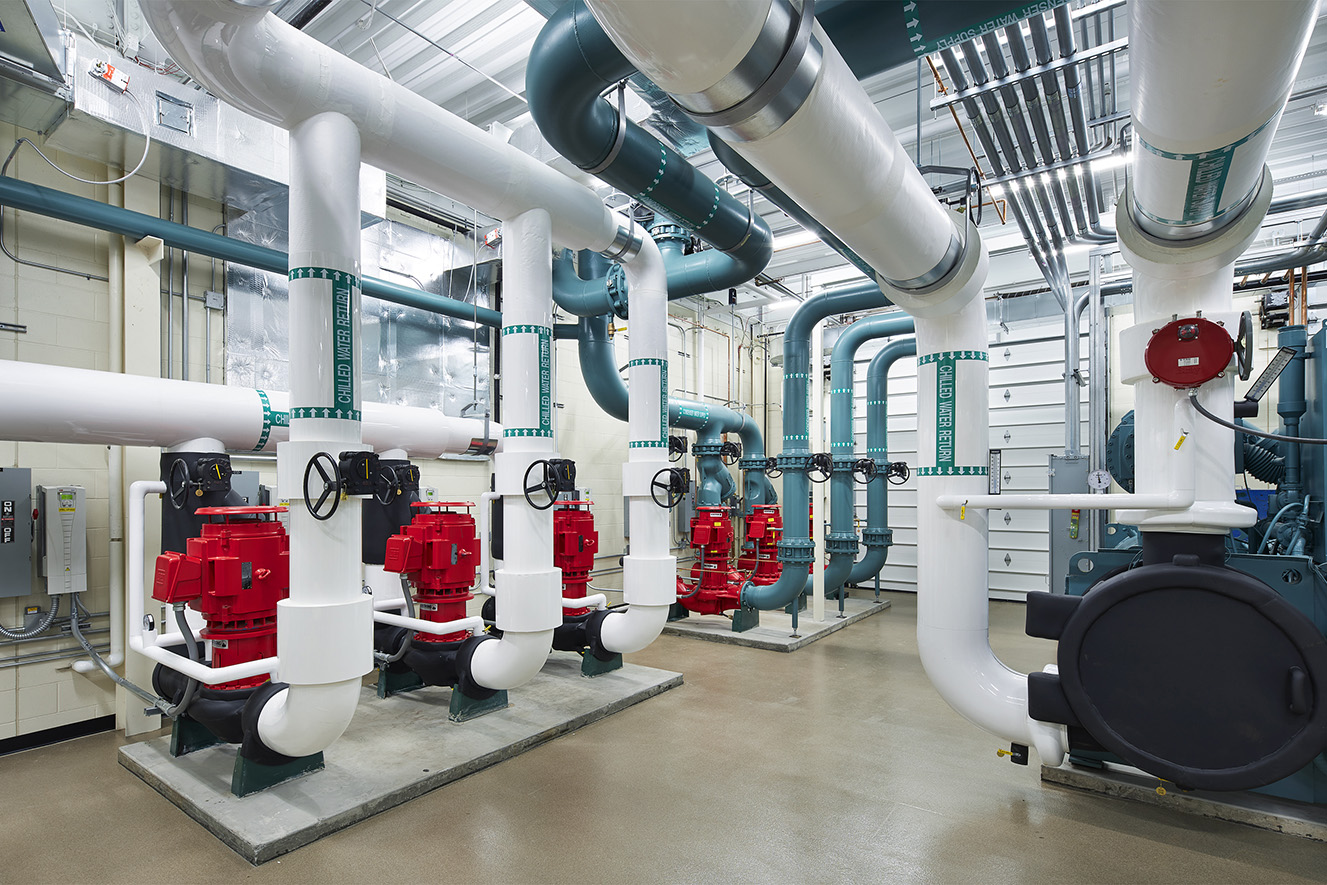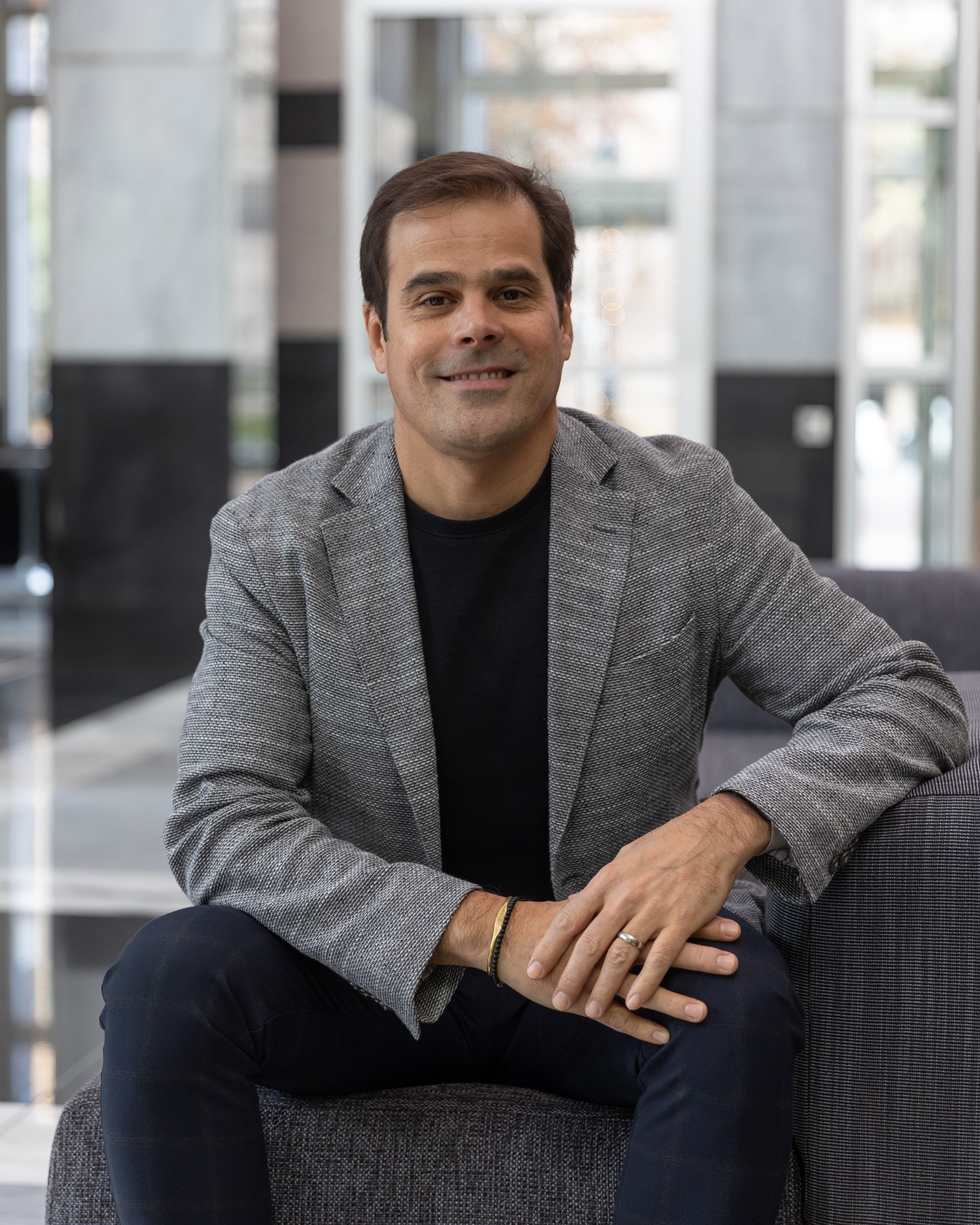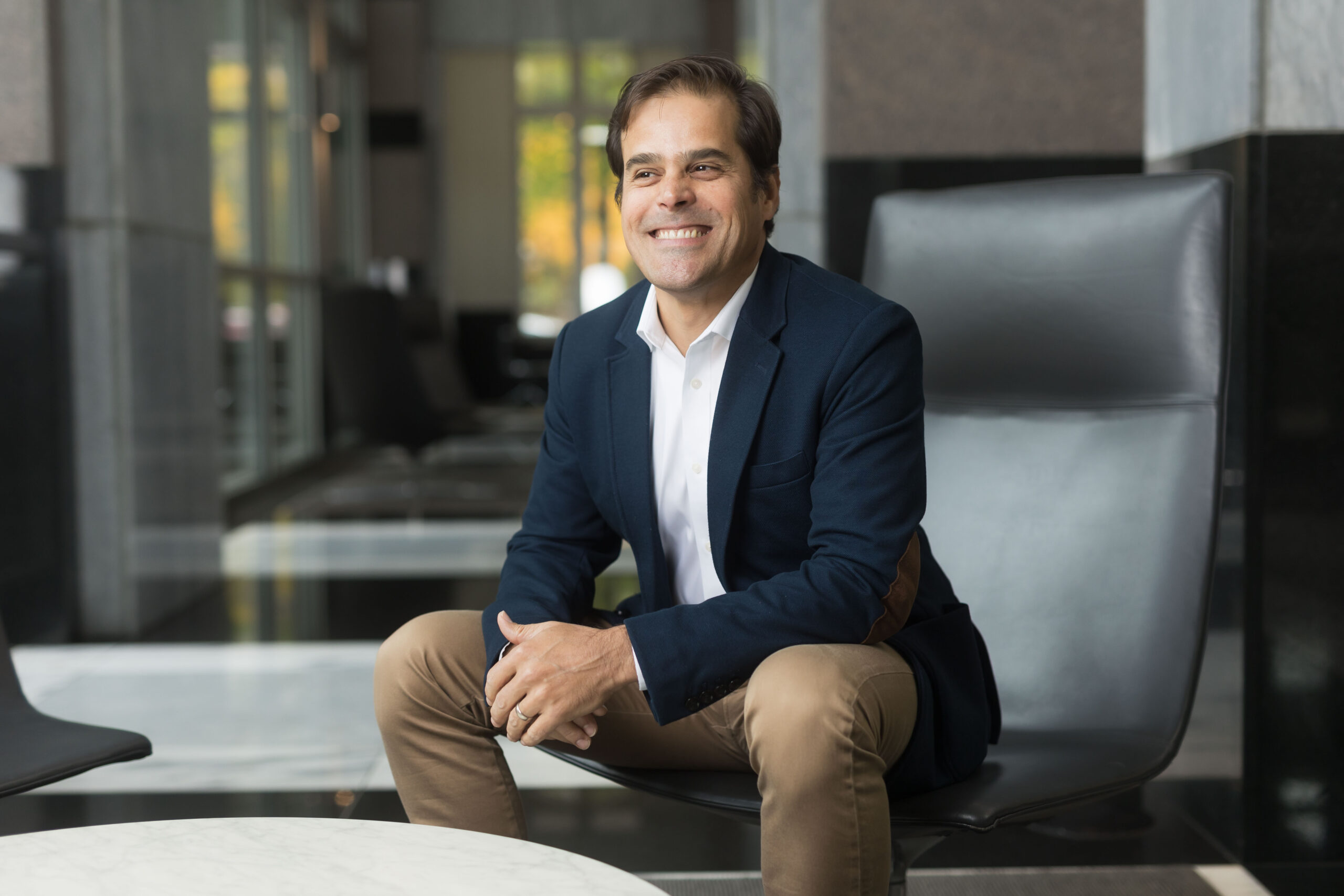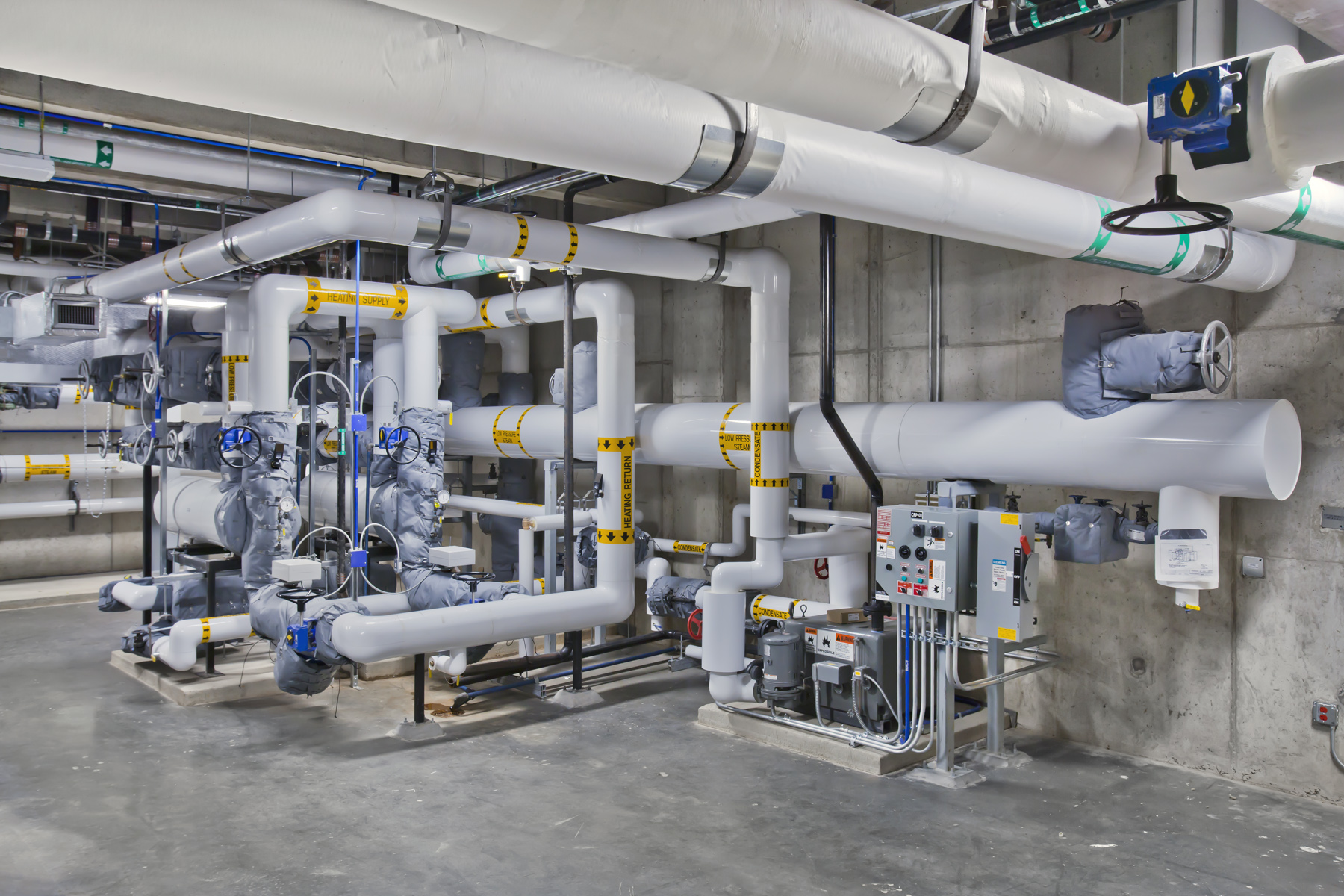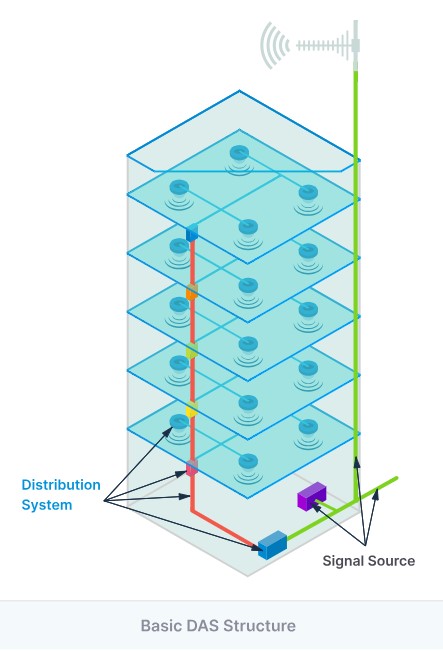When designed correctly, chilled water plants provide cooling to buildings and campuses with more flexibility, improved reliability, and higher energy efficiency. Subject Matter Expert Mike Jacobsen provides insight into this valuable centralized system.
What building applications are a good fit for chilled water systems?
Chilled water systems are a good choice for buildings when:
- The cooling load is greater than 50-100 tons.
- Many smaller temperature control zones are needed.
- Energy efficiency is at a premium.
- Cooling loads need a high degree of turn-down.
- The building occupants require versatility and flexibility in the future.
What are the most common types of chillers, and in what situations would you recommend each one?
The most common type is air-cooled chillers because they’re generally the easiest to install for clients who have smaller loads. Air-cooled systems are relatively simple to design and maintain, and they also have the benefit of being able to operate year-round.
For our clients with larger cooling loads, we typically use water-cooled centrifugal chillers that reject heat using cooling towers. Water-cooled centrifugal chillers are more energy efficient than air-cooled chillers and come in larger sizes, so they are the go-to option for larger systems.
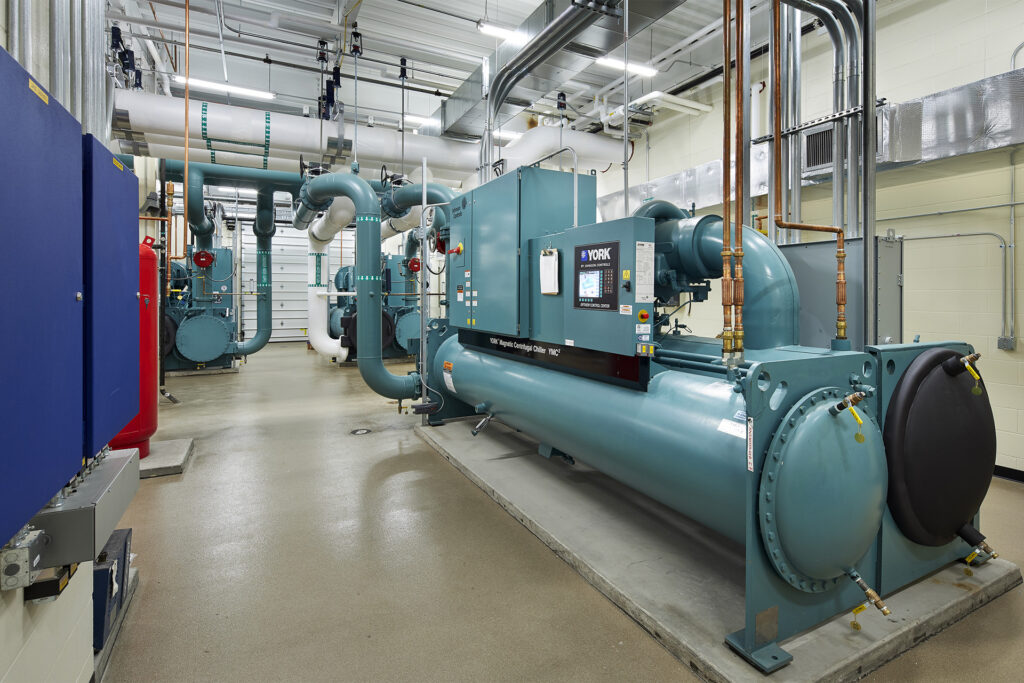
What chiller plant design trends have you seen throughout your career, and where is the industry heading?
The biggest trends now are heat recovery chillers and geothermal systems. We have been using these innovative technologies to help save the environment while reducing energy costs for our clients.
When water-cooled chillers reject heat, they are heating water. Instead of getting rid of this heat directly to the outside, heat recovery systems recycle this energy back into building demands such as space heating and domestic hot water systems.
There is never a perfect balance of supply and demand when using heat recovery chillers. However, geothermal systems solve this issue by extracting or rejecting this excess heat into deep underground reserves. From this, the system gains enormous energy efficiencies by capturing the thermal storage within the ground or underground aquifers.
One challenge with geothermal systems is the cost to enter. With traditional geothermal systems, a building needs numerous wells since you only get a small capacity out of each well hole, which significantly increases the overall system cost. The newest geothermal technology is aquifer geothermal wells. With this type of well, a hole is drilled down into the actual aquifer water underground, where a heat exchanger is placed. This heat exchanger can transfer significant energy to and from the underground aquifer, drastically reducing the number of wells needed in a geothermal system.
Although aquifer geothermal systems can have high first costs, the recently passed Inflation Reduction Act (IFR) offers significant government rebates for these systems. Our clients have found that these (IFR) rebates substantially cover the incremental cost of installing geothermal systems relative to conventional boiler/chiller designs.
